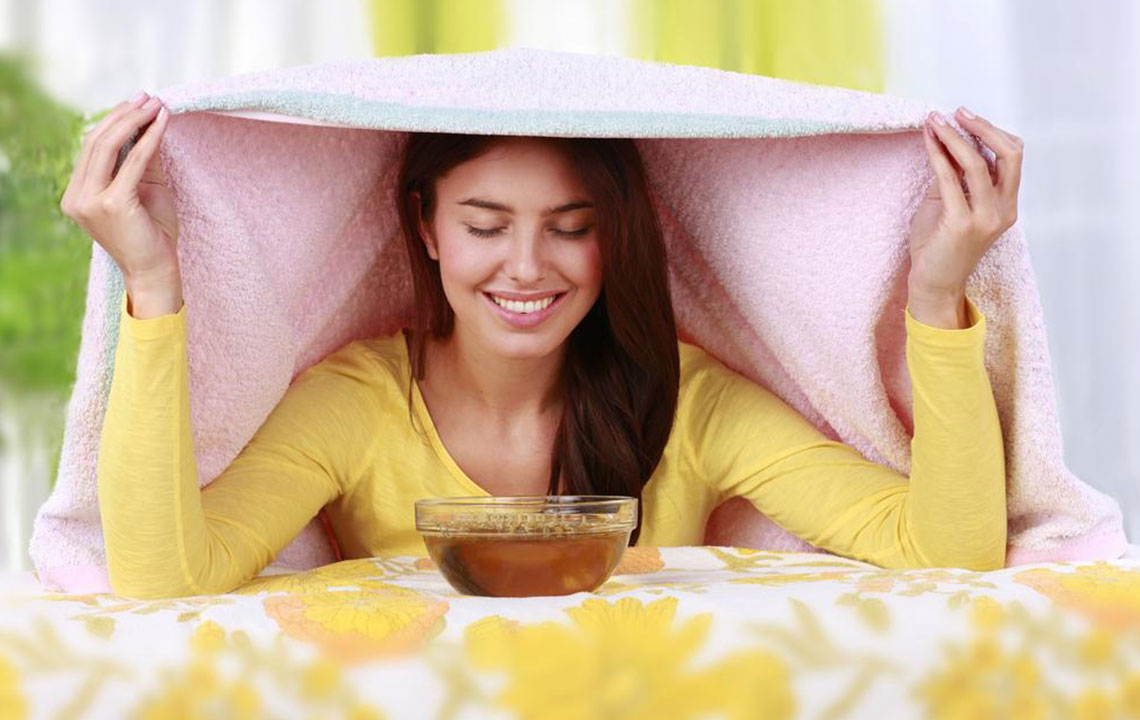Different Ways to Relieve Sinus Pressure

To start with, Sinusitis is an inflammation or a swelling of the tissues that line the sinuses. Generally, the healthy Sinuses are filled in with air, but when these get filled with fluids, germs tend to accumulate and cause infections. The infections can be caused due to a common cold, swelling of the lining of the nose, nasal polyps which are basically the small growths in the lining of the nose, or a shift in the nasal cavity can also cause Sinus problems. A lot of people suffer from sinus pressure because of temperature changes, and a lot of them develop it because of pollen allergies as well. Sinus could be acute, subacute, chronic or recurrent. Sinuses are located all throughout the face in the form of small pockets, they are located below the cheeks, behind the eyebrows and the forehead, either side of the nose and also behind the nose. Sinus is a very common problem these days, and a lot of population suffers from the same.
A large number of children are also now prone to sinus due to different allergies, or a common cold. The smoke in the air is also responsible for children to get sinus issues.
There are obviously medical ways to treat sinus, but below are some easy and self ‘To-do’ methods to relieve sinus pressure and breathe a sigh of relief finally. The best way is to do is to realize what triggers the sinus issue and try to stay away from it or avoid that situation as much possible.
Humidifier : The first thing would be is to use a humidifier or vaporizer, basically, inhale steam to open up the blocked nose and the nasal area. Steam inhalation has been proved to be one of the best remedies to cure a common cold which later on can lead to Sinus.
Drink a lot of Fluids: Drinking a good amount of water, coconut water, and fresh juice may help the mucus that is present in the nasal area to thin out, and it will relieve you from the sinus pressure.
Use Nasal Saline Spray: This is basically salt water and can be easily made at home as well. The Nasal Saline Spray will help you keep the nose area from drying out which helps to cure the discomfort you might be facing.
Allergy Proof the House: Allergies and dust around can make the sinus worse. It’s better to stay in neat and clean environments. A good thing would be to install something like an air purifier in your room or house. It greatly helps in making the dust go away.
Use a Warm Compress: It’s an uncomplicated and quick way to relieve sinus pressure; the warm compress will help the nasal tissues to stay moist.
Humming: A lot of doctors suggest people who suffer from sinus pain to do an hour of humming. Humming basically helps improve the airflow, so that the air passes by easily to the sinus and the pain subsides.
Deep Breathing: Taking deep breathes is also a very easy way through which you can get rid of the pressure you might be experiencing due to sinus. Deep Breathing helps to relax the body and also helps to open up blocked nose.
Massaging the Pressure Points: A great way to deal with sinus discomfort would be to press the middle part of the forehead area that is the point in between your eyebrows, this helps to relieve headaches and also the pressure that sinus causes.
Press either side of the nostrils: Pressing both the lower sides of your nose will help you get rid of the pain you might face around your cheek area due to sinus.
Take In Moist Air: Breathing moist air is the most important thing to do when it comes to sinus pressure. Dry air generally irritates the sinuses can cause a lot of discomforts. The moist air will keep the congestion at bay, so one must try and breathe using a humidifier as much possible.
Avoid Smoking: Smoking in any way is very injurious to health and for people with sinus issues; it can aggravate the situation even more. Quit smoking especially on days when you have sinus pressure going on.
Taking Painkillers: Taking simple painkillers can temporarily help you get relief from any a sinus headache you might be experiencing, but it’s always good to first consult a doctor and then take up any medication.
Avoid Perfumes or Irritants: A lot of different fragrances can irritate the sinus even more. So, it’s better to stay away from such things especially during the days when you are suffering from a sinus infection.


